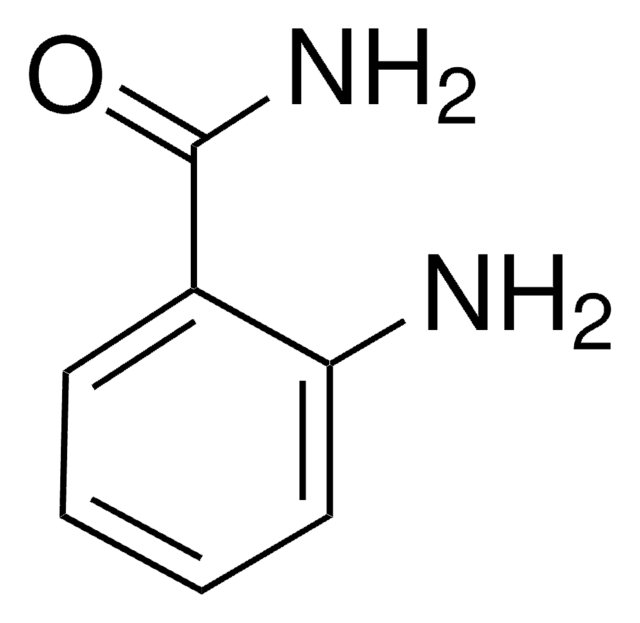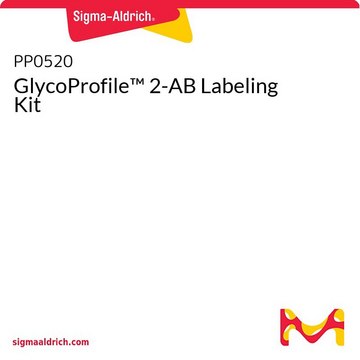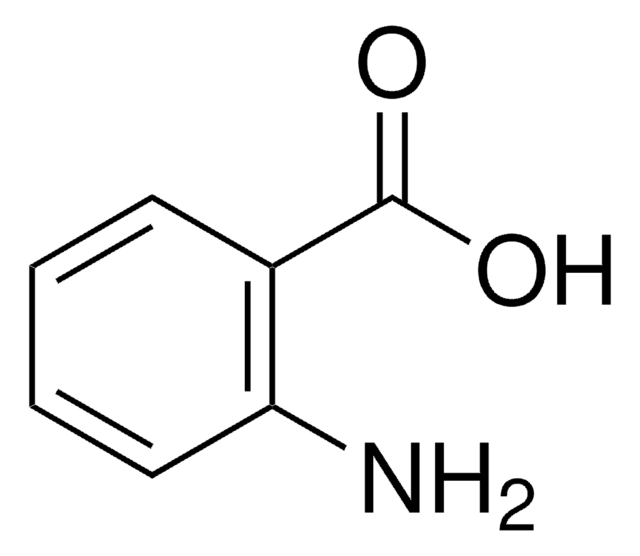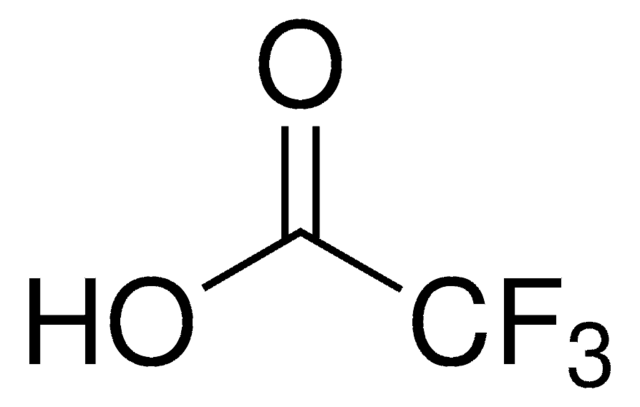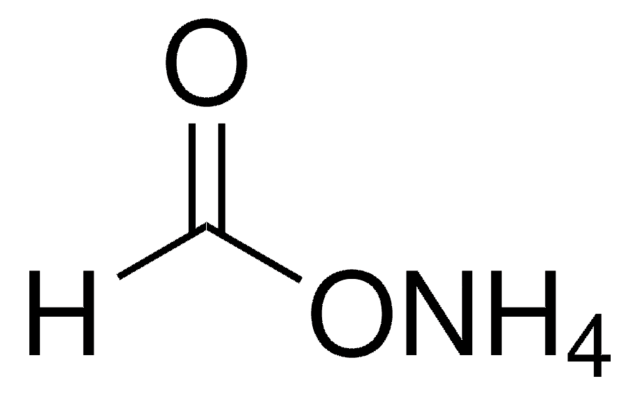76884
Anthranilamide
matrix substance for MALDI-MS, ≥99.0% (HPLC)
Synonym(s):
2-AB, 2-Aminobenzamide, Anthranilic acid amide
About This Item
Recommended Products
grade
matrix substance for MALDI-MS
Quality Level
Assay
≥99% (NT)
≥99.0% (HPLC)
form
crystals
technique(s)
MALDI-MS: suitable
mp
111-113 °C (lit.)
cation traces
Ba: ≤5 mg/kg
Ca: ≤5 mg/kg
Cd: ≤5 mg/kg
Co: ≤5 mg/kg
Cr: ≤5 mg/kg
Cu: ≤5 mg/kg
Fe: ≤30 mg/kg
K: ≤50 mg/kg
Mg: ≤5 mg/kg
Mn: ≤5 mg/kg
Na: ≤150 mg/kg
Ni: ≤5 mg/kg
Pb: ≤5 mg/kg
Zn: ≤5 mg/kg
SMILES string
NC(=O)c1ccccc1N
InChI
1S/C7H8N2O/c8-6-4-2-1-3-5(6)7(9)10/h1-4H,8H2,(H2,9,10)
InChI key
PXBFMLJZNCDSMP-UHFFFAOYSA-N
Looking for similar products? Visit Product Comparison Guide
Application
Analysis Note
related product
Signal Word
Warning
Hazard Statements
Precautionary Statements
Hazard Classifications
Eye Irrit. 2
Storage Class Code
11 - Combustible Solids
WGK
WGK 1
Flash Point(F)
>365.0 °F
Flash Point(C)
> 185 °C
Choose from one of the most recent versions:
Certificates of Analysis (COA)
Don't see the Right Version?
If you require a particular version, you can look up a specific certificate by the Lot or Batch number.
Already Own This Product?
Find documentation for the products that you have recently purchased in the Document Library.
Customers Also Viewed
Our team of scientists has experience in all areas of research including Life Science, Material Science, Chemical Synthesis, Chromatography, Analytical and many others.
Contact Technical Service